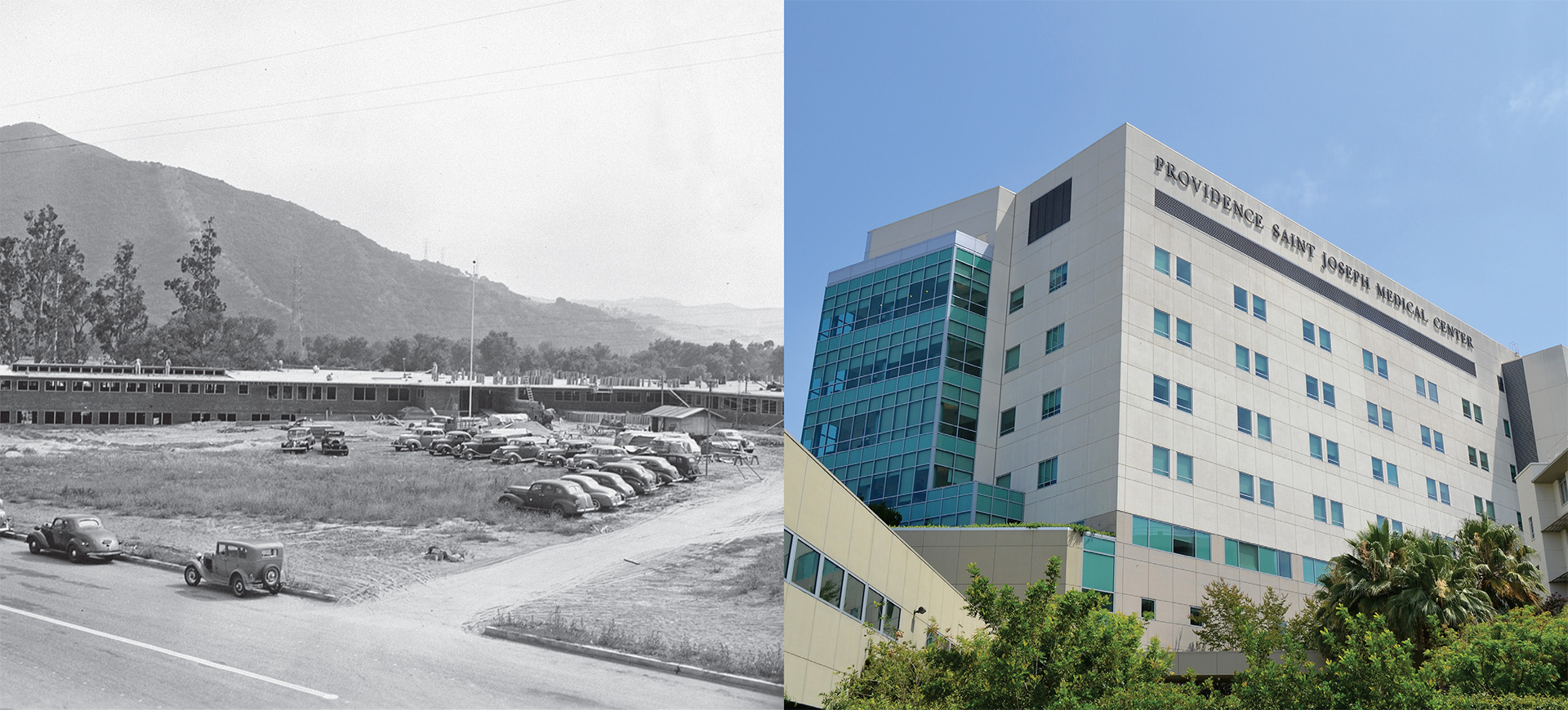

As the Great Depression ended and World War II began, the Toluca Lake–Burbank area was rapidly transitioning from a small, rural community to a residential and business epicenter. The population of Burbank alone doubled from 1930 to 1940, then again from 1940 to 1950. Thousands of homes were built as defense companies like Lockheed Aircraft Corporation — which employed more than 90,000 people during the war — expanded their workforces to meet demand, all while the entertainment industry was booming. In the midst of and in response to this growth, Saint Joseph Hospital was founded to bring compassionate care to all who needed it.
Over the course of the next 75 years, the first hospital in the San Fernando Valley grew to become one of its largest, among the top 100 in the nation. Generations of locals have been born there or treated there, received health screenings or home care, taken classes on everything from wellness to babysitting skills, volunteered in various aspects or donated to help it grow. And it hasn’t just touched the lives of neighborhood residents — its reach extends into Glendale, Hollywood and Studio City, as well as the Valley, and encompasses people who work in the area or visit tourist attractions like Universal Studios and the Hollywood Bowl, not to mention the fact that it’s also one of Burbank’s largest employers. But just as much as the institution now known as Providence Saint Joseph Medical Center has shaped the surrounding community in ways large and small, it’s also been shaped by it, evolving to meet the specific needs of the population and receiving vital local support throughout its rich history.
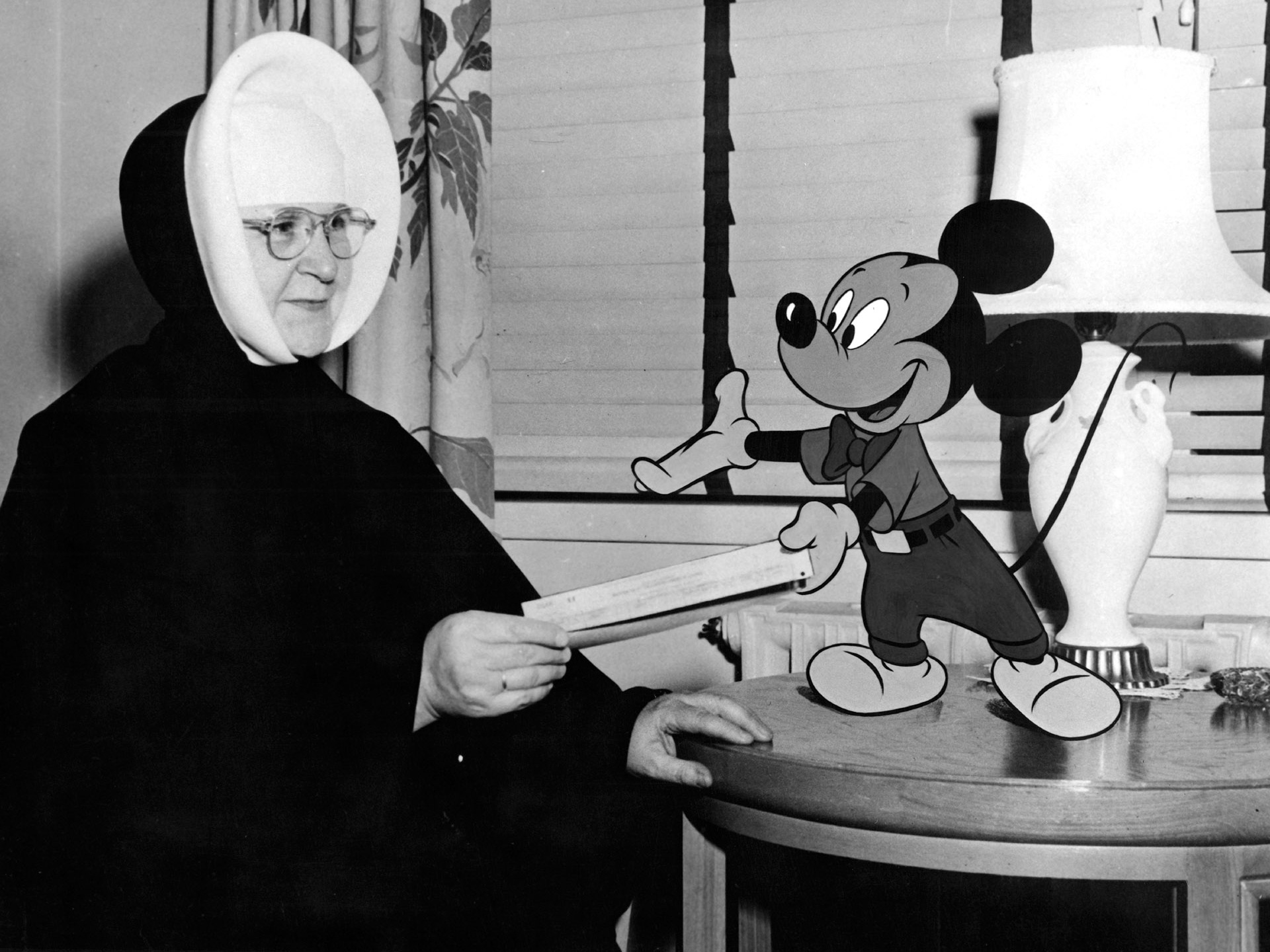
From the beginning, Providence Saint Joseph represented a unique partnership between the civic, business, medical and faith communities. In 1942, recognizing that the growing population of the Valley needed reliable health care, two local doctors, Thomas Hearn and George Adams, requested the Catholic Church’s help in establishing a hospital. The Church turned to the Sisters of Providence, an order founded in 1843 that had “made their way from Montreal, Canada, to the Pacific Northwest against the odds with a goal to serve those most in need, opening schools and hospitals,” Providence Saint Joseph Chief Executive Kelly Linden explains. These deeply dedicated and determined women accepted the challenge to build and operate a facility in Burbank. Lockheed helped secure a $230,000 federal grant and donated 11 acres across the street from Walt Disney Studios as a site for the new hospital, which the Sisters named in honor of Saint Joseph.
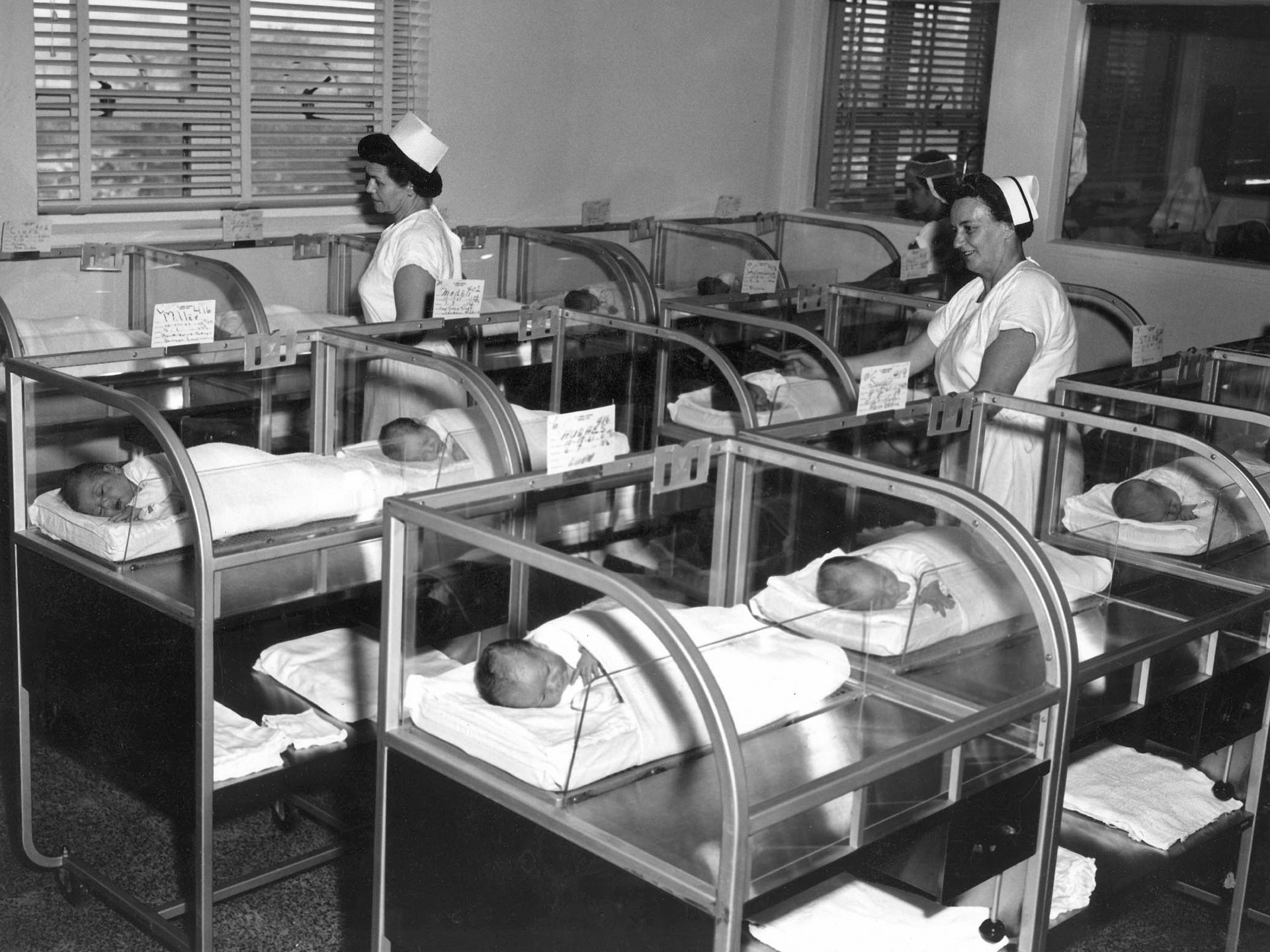
In January 1943, work began on the estimated $537,000 project of transforming the tumbleweed-covered lot surrounded by ranches and farmland into a four-wing, 100-bed hospital. The plans originally called for a two-story building, but the federal government limited all hospital projects to one level in order to save construction materials for the national defense effort. Wartime shortages also meant that builders couldn’t use steel or cement to reinforce the wooden structure, and the Sisters had to shop in secondhand stores for many necessary items, but Lockheed’s powerful connections helped secure enough supplies to keep the project on track.
Lockheed wasn’t the only organization to realize that accessible medical care was vital to helping the region grow and thrive, and local participation went far beyond financial donations. Saint Joseph Hospital’s first advisory board included not only Lockheed executive John Canaday but also Walt Disney, and a fundraising appeal to help finish the building was spearheaded by Warner Bros. executives and Burbank’s mayor. Residents, too, were clearly excited to have a hospital nearby, with more than 3,000 people attending the dedication ceremony in November 1943. Donations to the project ranged from $25,000 given by Lockheed’s Employee Buck-of-the-Month Club to 13 pennies sent by an 11-year-old-girl; a local dentist even contributed by using his tractor to clear weeds from the hospital lot.
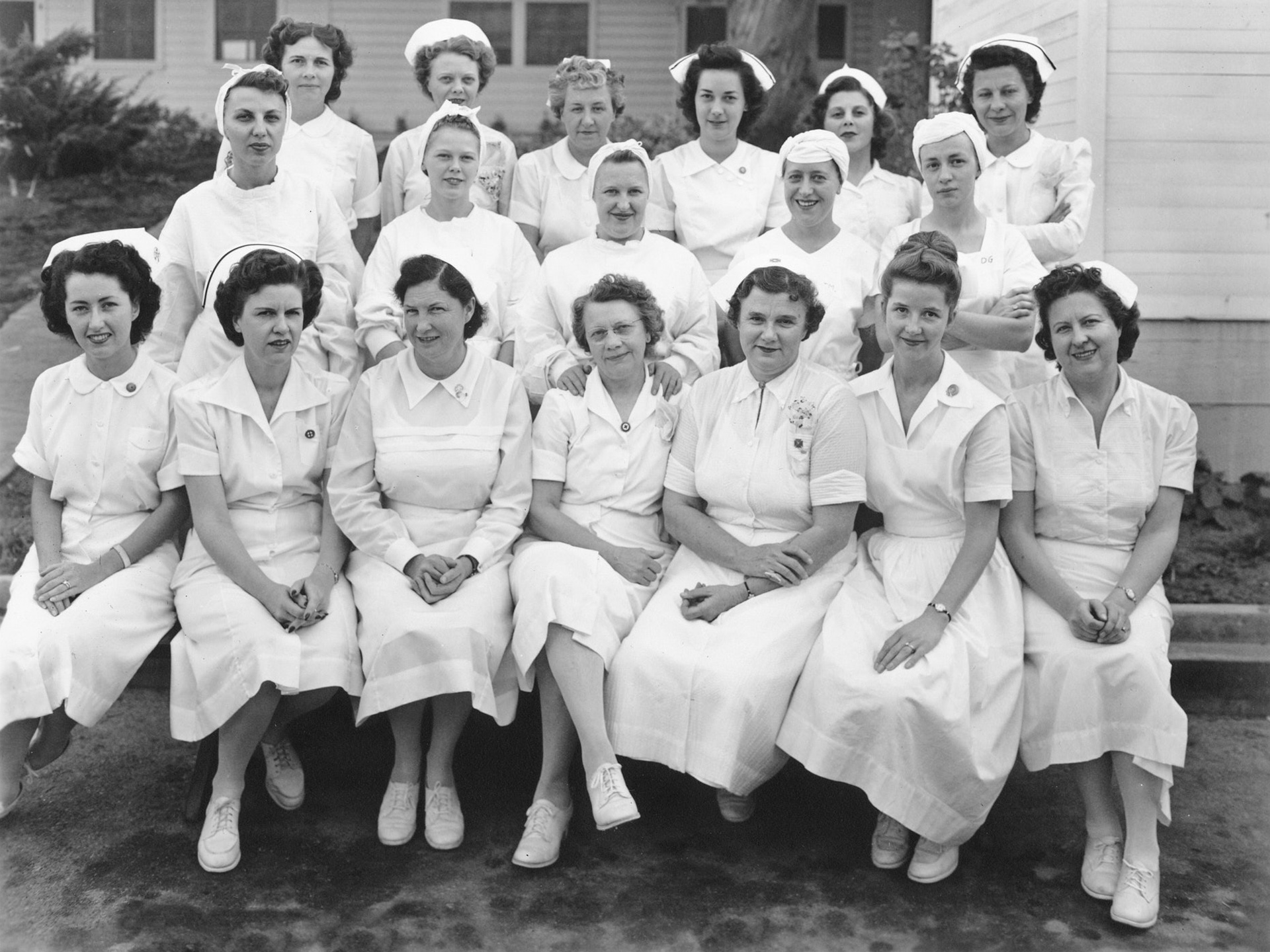
The urgent need for medical services was perfectly illustrated on Saint Joseph’s first day of operation, February 1, 1944. The hospital was scheduled to open at 8 a.m., but when an expectant mother in labor showed up two and a half hours early, administrator Sister Flora Mary and Dr. Carl Land admitted her so the baby could be delivered safely. The newborn son of Mr. and Mrs. William Smith was awarded a $100 war bond and won the Stork Derby, a contest held for the first child to enter the world at the brand-new facility.
In its first year, Saint Joseph Hospital saw 902 births, nearly 3,500 inpatients and as many more outpatients. The small staff — including 12 Sisters of Providence in administration, nursing and support services such as laundry — worked long hours in less-than-ideal conditions. There was no air-conditioning except in the surgery department, so the heat could be intense and doors were frequently left open to the breeze (occasionally admitting a rabbit or rattlesnake); the area was also prone to flooding during heavy rains. But community backing was strong, with Walt Disney often stopping by to personally invite employees to film screenings next door. Local women formed a Ladies Guild in late 1944 to help support the hospital; Dolores Hope served as its first vice president, and she and her husband would be stalwart Saint Joseph donors and advocates for the rest of their lives.
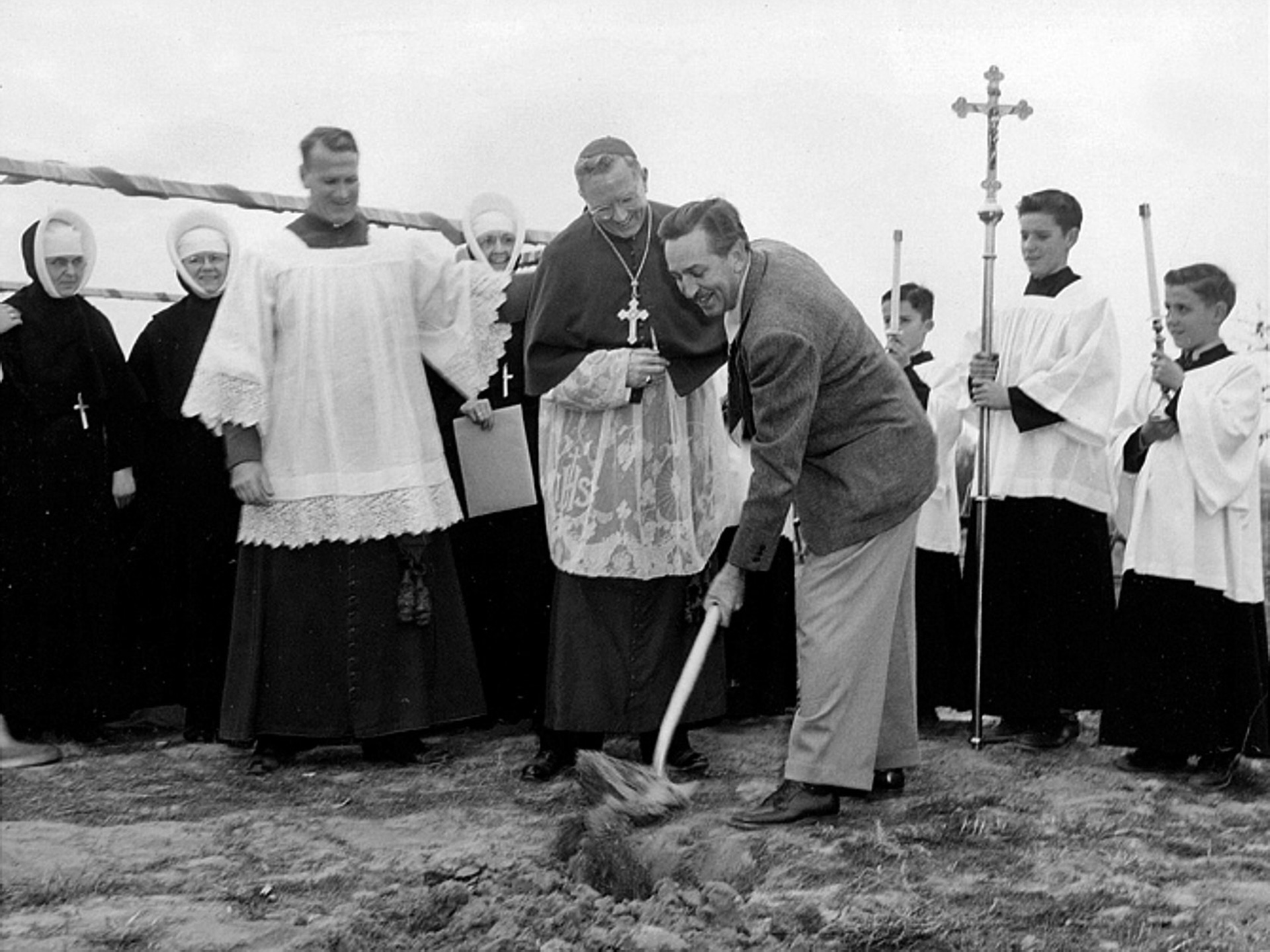
Thanks to the postwar baby boom and trend toward suburban living, the number of San Fernando Valley residents increased by nearly 40% in the hospital’s first decade and the infant delivery rate at Saint Joseph doubled. The hospital needed to grow accordingly, and in 1953 it opened a five-story, 100-bed East Wing with three floors devoted to maternity services. The community again sprang to help: Leaders at Lockheed, Warner Bros., Republic Pictures and Universal promoted the expansion, and the Hopes and Disney served on the campaign committee, staging a successful telethon that featured 60 radio, TV and movie personalities. And as the Valley’s population approached and then surpassed the one-million mark, even as other area hospitals were established, Saint Joseph continued to operate at peak capacity and find ways to meet rising demand. By 1969, the hospital had grown fivefold, with 1,000 employees, 18,000 patients per year and 20,000 annual emergency visits. Every decade saw additional expansion projects, including the six-story South Wing in 1973 and the five-story Robertson Tower in 1993.
Community members contributed to every stage of Saint Joseph’s growth. A robust volunteer program began in 1961, delivering meals, mail and flowers to patients, directing visitors and performing other tasks as needed, and a group of 14-to-18-year-olds known as the “Josettes” provided after-school and summer help. By 1993, volunteers had given nearly a million hours of service. “My grandmother, Anita, was a volunteer at the hospital for decades,” says longtime local resident Michael Cusumano, president of the Burbank-based Cusumano Real Estate Group and chair of the Board of Governors for Providence Saint Joseph Foundation, a group of community leaders formed in 1980 and dedicated to the medical center’s fundraising efforts. “Some of my fond memories are going to the medical center and having lunch with her, and seeing her in her volunteer’s uniform. She really took a lot of pride and satisfaction in being able to give back to the community through that volunteer work. That was how I first became familiar with how important supporting the hospital was.” Continuing her legacy, the Cusumano family gave generously to the hospital over the years, including funding a neuroscience institute in 2011 and the upcoming urgent care center.

This community support enabled not only the steady expansion of hospital facilities, but also a host of medical advances. In the 1950s alone, Saint Joseph boasted the first electroencephalograph, cobalt therapy unit and hearing center in the San Fernando Valley, as well as the first electron microscope in California. In 1959, its cardiac service was certified by the American Heart Association, and the opening of a cardiac catheterization lab laid the foundation for what would become a leading regional heart center. The 1960s saw a new intensive care unit (which charged patients just $12 a day), the first program in L.A. County offering CPR training to its doctors (who then began teaching the technique to local firefighters, launching the city’s first paramedic service), one of the first coronary care units in the state and a continuing medical education program to help physicians stay up to date on the latest innovations.
In 1971, the hospital changed its name to Saint Joseph Medical Center to better reflect its increased size and services. Two years later, it took a major step forward in staffing its emergency department full-time with board-certified emergency medicine physicians. “When our group started, emergency medicine was not a specialty,” explains Philip Schwarzman, M.D., FACEP, president of the Burbank Emergency Medical Group. “Saint Joe’s was the first hospital in California to hire a group to exclusively provide emergency care. We were at the forefront of emergency medicine in Southern California.” In addition, as the largest and best-equipped local acute-care facility with nurses specially trained in mobile intensive care nursing, in 1976 Saint Joseph became the first hospital in the eastern Valley to receive paramedic base station status. The firsts kept on coming in the following decades, as Saint Joseph continued to lead the region and beyond in cutting-edge care.
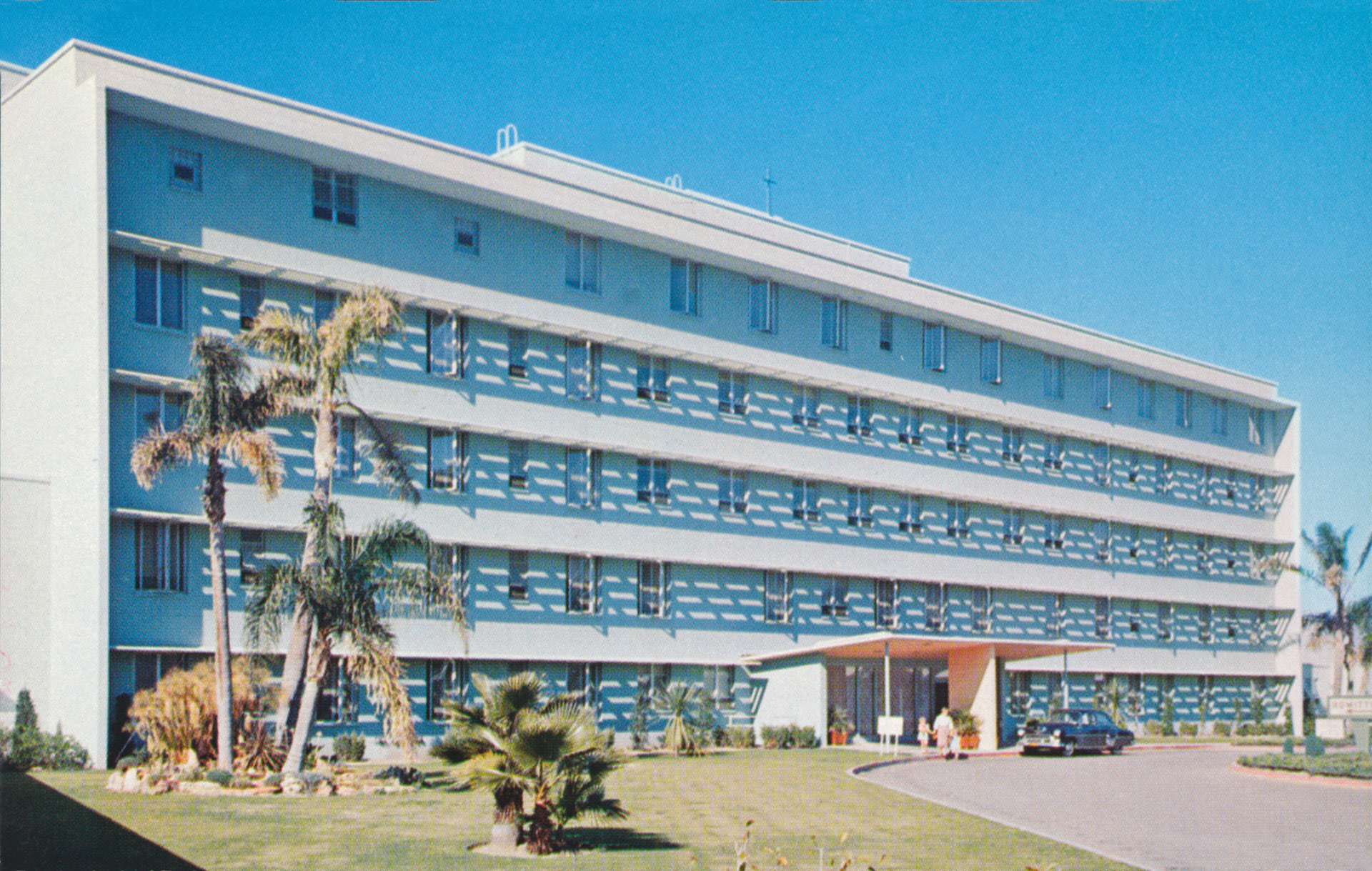
That care not only helped improve the lives of residents, but also boosted the profile of the community as a whole. “Without state-of-the-art medical care and stellar professionals, I believe that the Fortune 500 companies that are housed in and around Burbank would not be here,” 19-year Providence Saint Joseph Foundation Board of Governors member and former Burbank mayor Michael Hastings says. “The top-tier executives and their employees were assured of the very best facilities and care. Without this institution and its job-rich environment, plus outstanding care to those in need, Burbank may not have been as attractive a location to live and work.”
That’s also why the studios and other corporations, plus civic organizations like the Burbank HealthCare Foundation, have continued giving generously to help the hospital grow, just as local businesses did in its earliest days. Providence Health and Services Foundation Valley Service Area Board Treasurer Ed Romano, a longtime Toluca Lake resident and former Warner Bros. Vice Chairman, recalls that he got involved in supporting the hospital because “Saint Joe’s was the hospital that all my employees would be going to if there was an issue when they were at work, and also it was the hospital for my family.” And it’s not just the big corporations who have a stake in the hospital’s success, he adds: “Even the Lakeside Golf Club knows that if something should happen to one of their members on the golf course, like a heart attack, they’re going to end up going to Saint Joe’s. It’s in everyone’s best interest to support the hospital.”
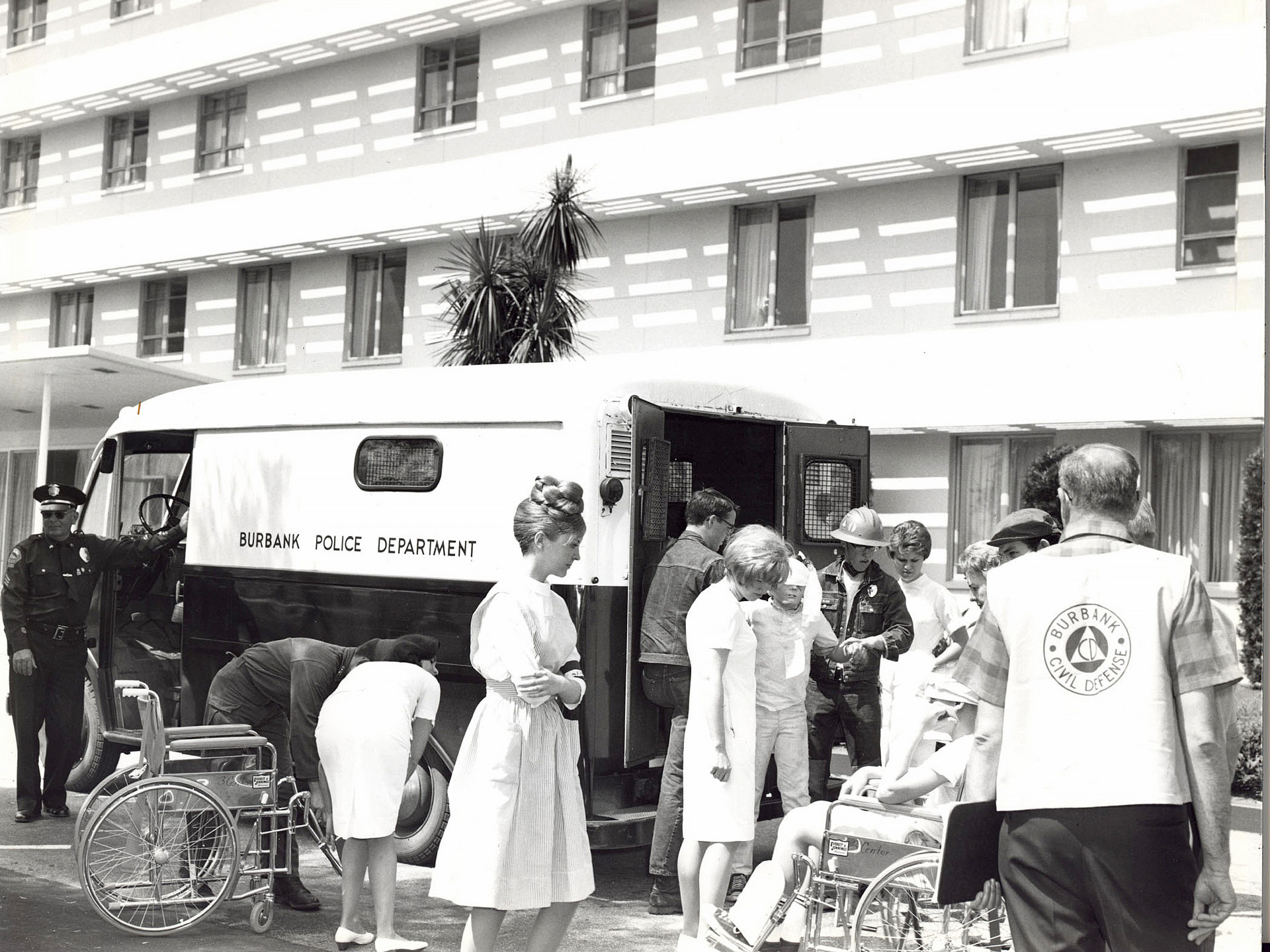
Foundation Board member Brad Howard calls this “a local handshake, so to speak” — how the hospital and the community keep on benefiting each other in turn. Over the decades, this reciprocal relationship has driven local philanthropy, which has subsequently fueled growth to help meet the community’s needs, as Raul Mena, M.D., Medical Director at Providence Saint Joseph’s Roy and Patricia Disney Family Cancer Center, explains: “To be able to take care of our cancer patients, we needed a new ICU. To heal the wounds of cancer, we needed a rehabilitation center. To care for the concentration of cancer patients, we needed an ER and urgent care and radiology center equipped with the technology where patients receive the best available care. The hospital and community stepped up to do that for us. In 1994 after the Northridge earthquake, the community raised $11 million to build the North Tower. In 2005, the Northeast Tower went up and the community raised $24 million. Before the Roy and Patricia Disney Family Cancer Center opened in 2010, the community raised $33 million so we could provide integrated medicine, genetics, medical oncology, a breast center. It’s an amazing place.”
But while its facilities and services expanded and evolved over the years, the hospital’s core values remained steadfast. “I think the most significant aspect of Saint Joseph’s history is the fact that it is part of a faith-based system,” Providence Specialty Medical Group President David Sato, M.D., says. “We are constantly reminded of our mission to care for the poor and vulnerable. Although I am not Catholic and not particularly religious, I am reassured that we are all motivated to try to provide the best care possible for all of the right reasons.” A nonprofit, the hospital has always emphasized charitable and community programs, such as providing eye exams for needy children and adults through the Burbank Lions Club in the 1950s, donating space and personnel for a National Charity League children’s medical clinic and dental clinic in the 1960s, donating a Buena Vista Park fitness course to the city in 1981, and much more. It’s a tradition that extends all the way back to the early days of the Sisters of Providence, as Providence Health and Services Foundation Valley Service Area Board Chair Peter Lynch points out. “Just think about the Gold Rush and how crazy and wild it was, and here were these young women who traveled across Canada and down the West Coast in horse-driven buggies, begging to raise money for schools and hospitals, wanting to serve the underserved and the poor,” he says. “That value is still so present in what happens at Saint Joseph’s, that spiritual piece, no matter what faith. One of our mottos is ‘Know me, care for me, ease my way,’ and that’s the centerpiece for what we do.”
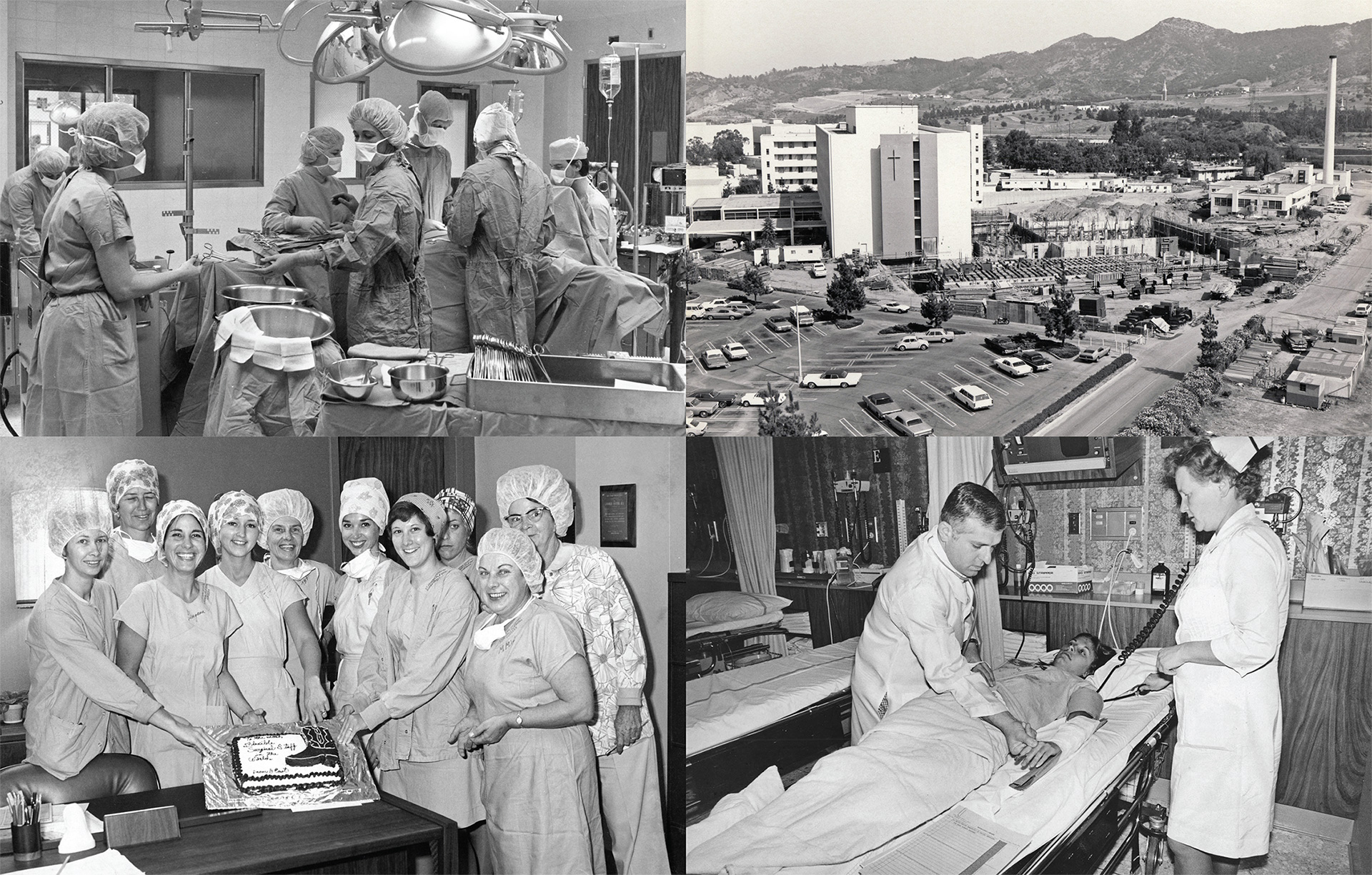
The original single-story, 100-bed wooden structure the Sisters called “the Little House” is now a 392-bed medical center that comprises four main multi-story buildings plus the nearby Roy and Patricia Disney Family Cancer Center, has 2,500 employees and 400 volunteers, and is part of a 51-hospital system. But that’s far from the end of the story; true to the spirit of service and expansion that marked its history, Providence Saint Joseph continues to look to the future to meet the changing needs of the community. With more than 72,000 people seeking emergency care there each year, the medical center is engaged in a major campaign to build a new 33,000-square-foot emergency department, including an on-site urgent care center, planned to open in 2022 — and entirely funded through community philanthropy. This amazing demonstration of mutual support is a perfect example of the strong bond between doctors, patients, donors and volunteers that’s helped the hospital and the area it serves thrive for 75 years and beyond.
For more insights on the hospital’s past, present and future from those who know it best, read our bonus story, “Voices From Providence Saint Joseph.”
